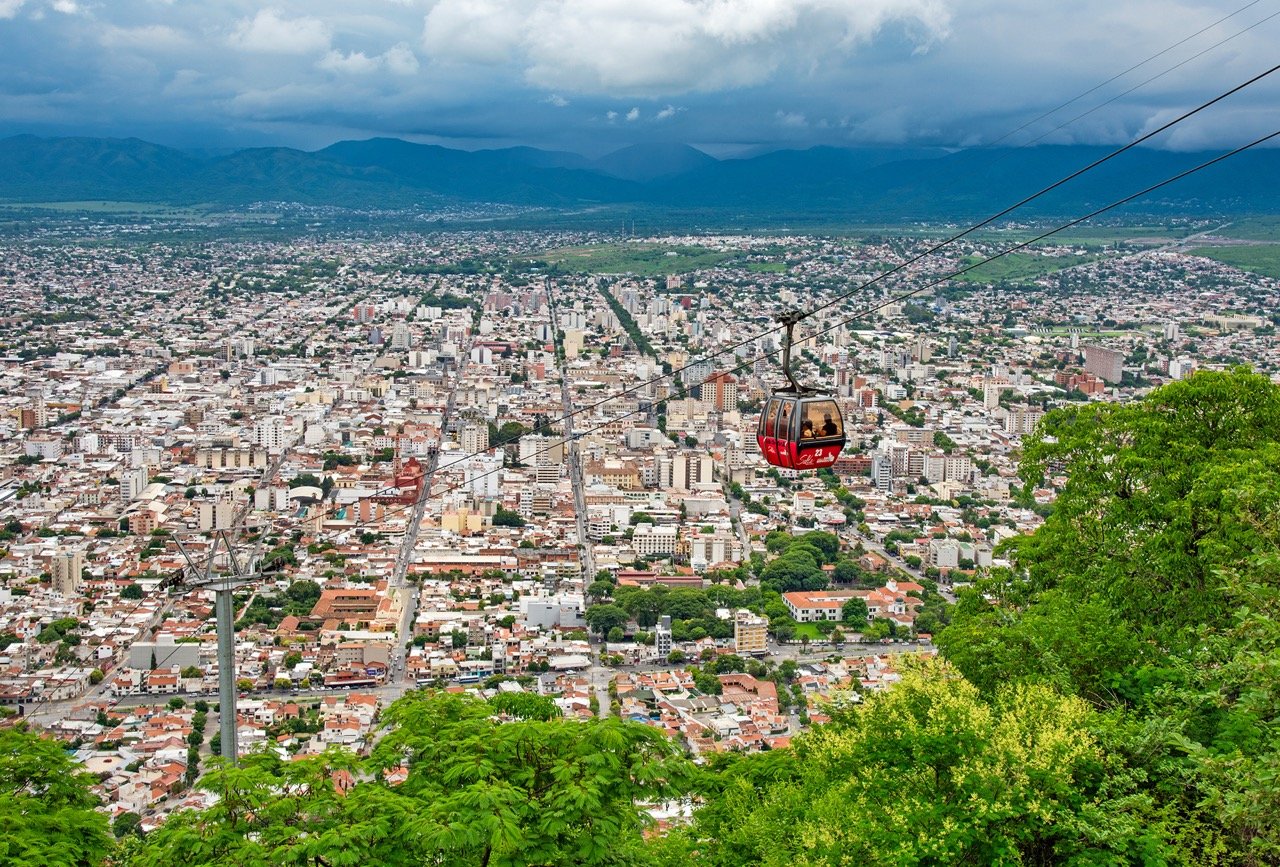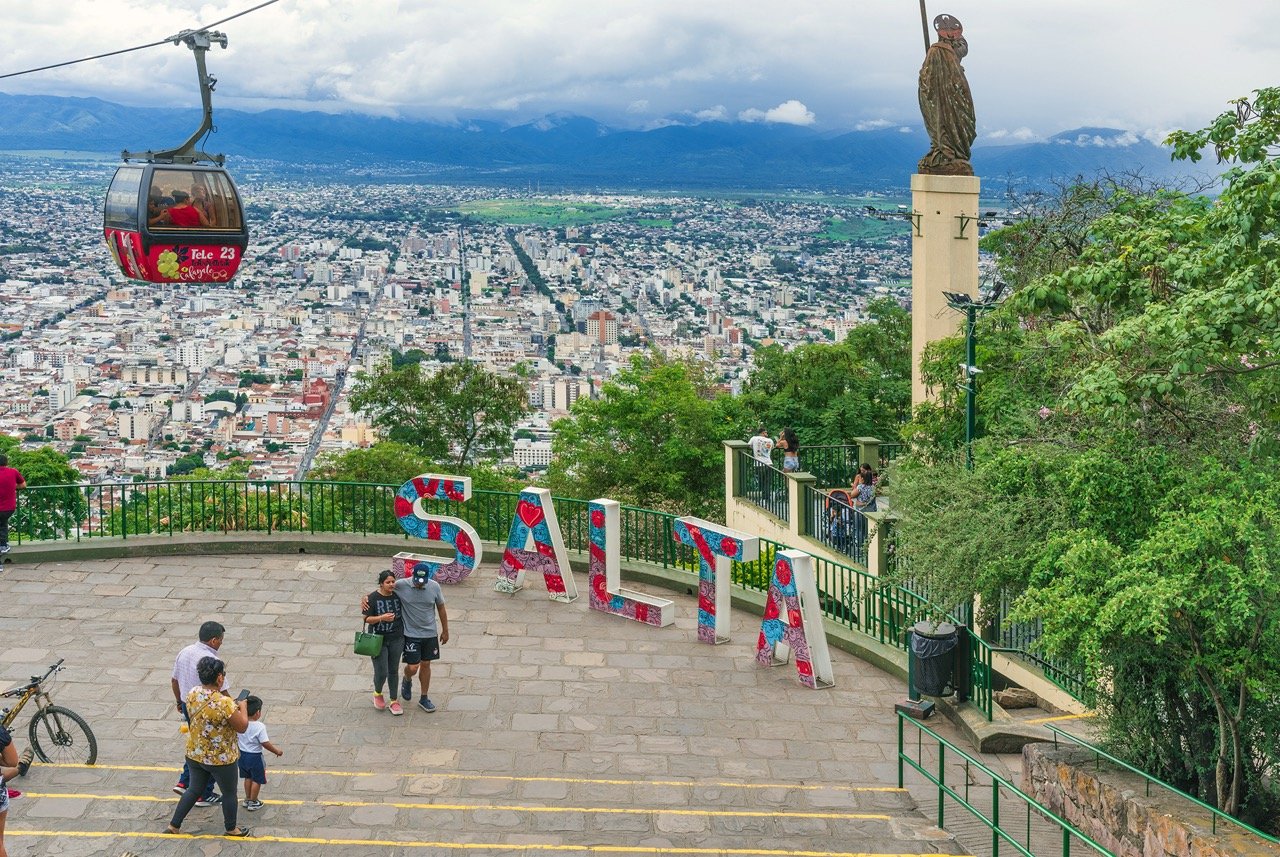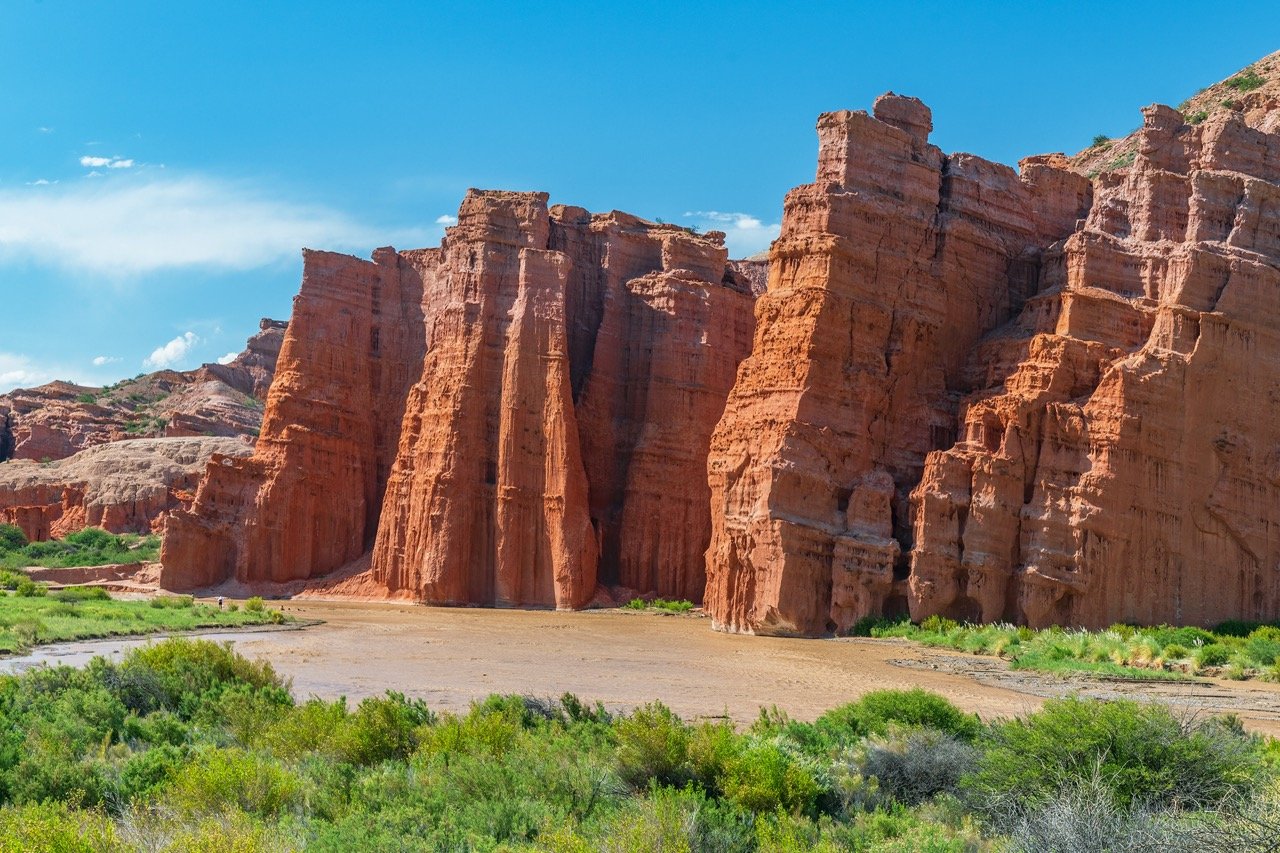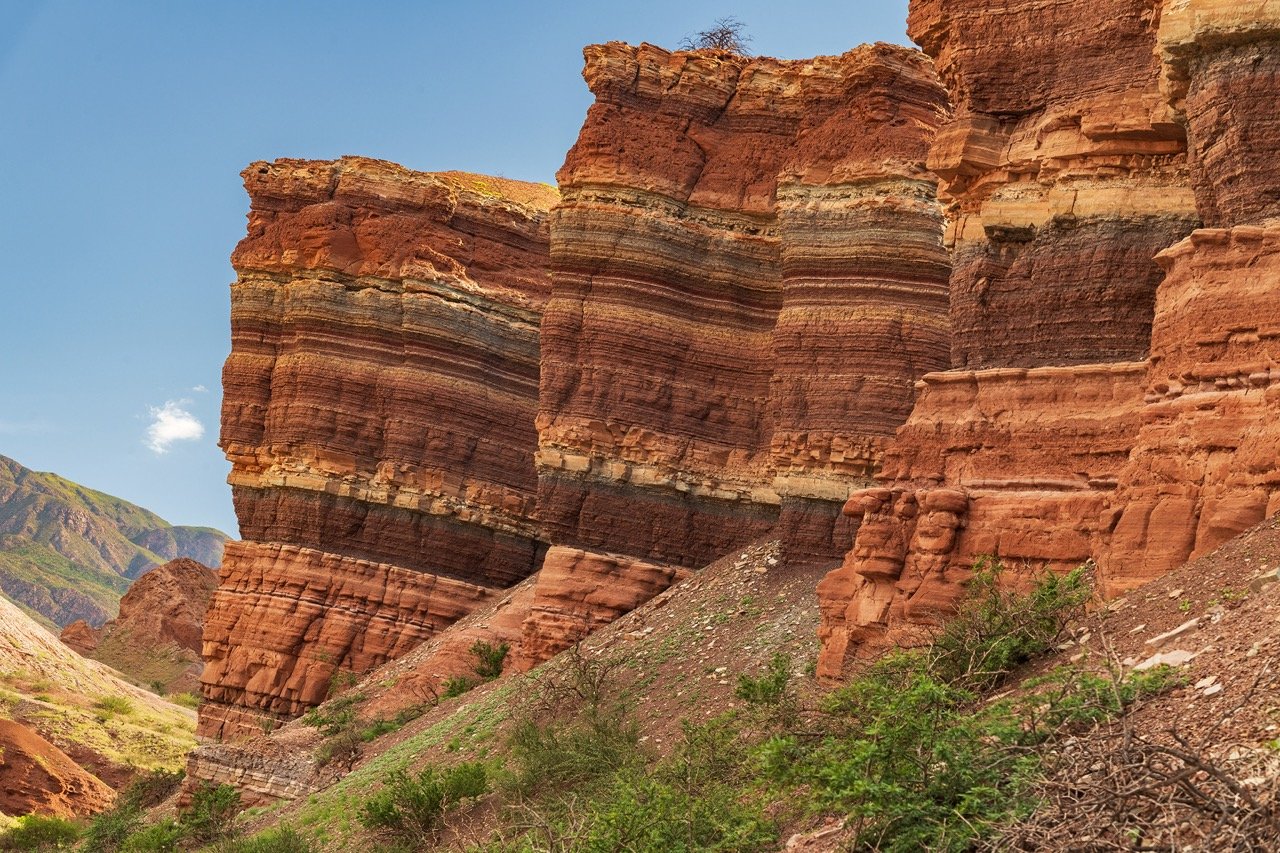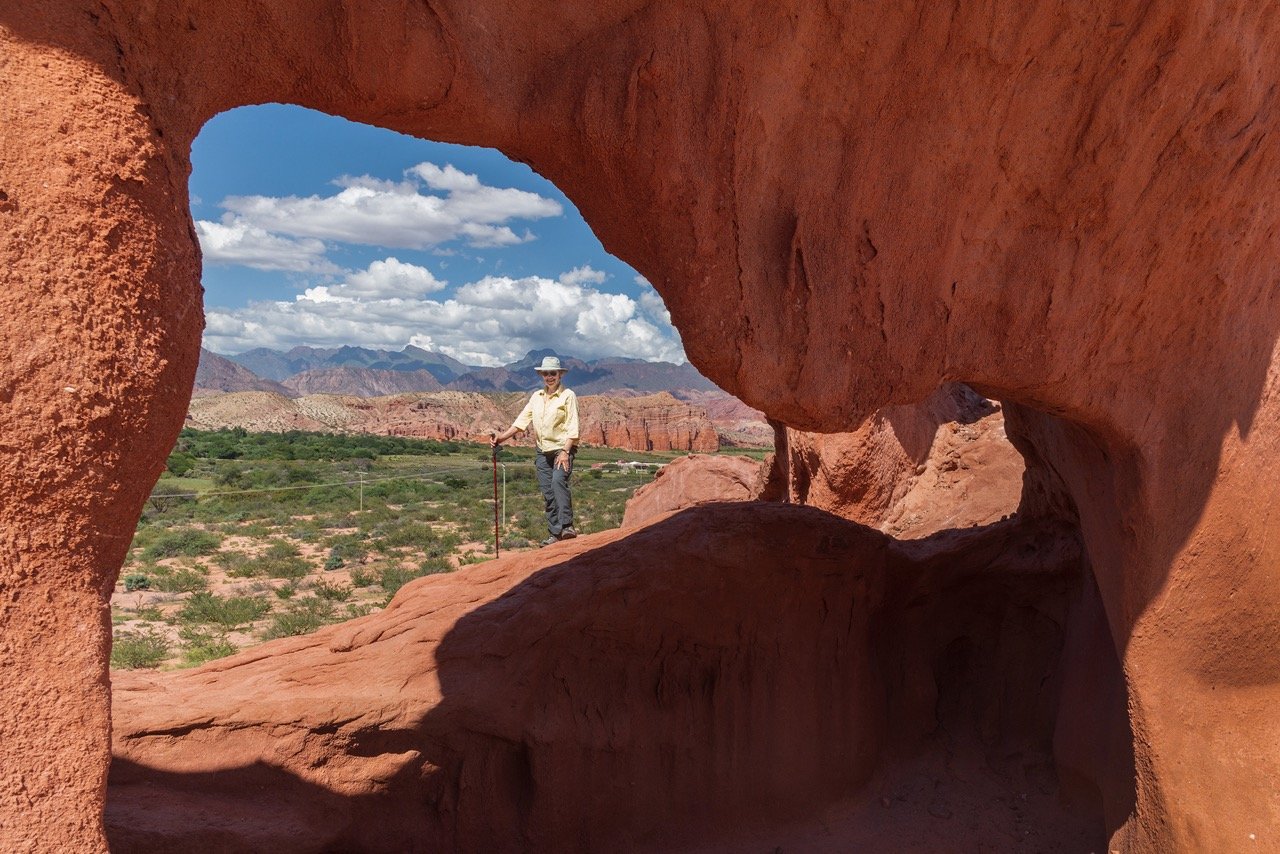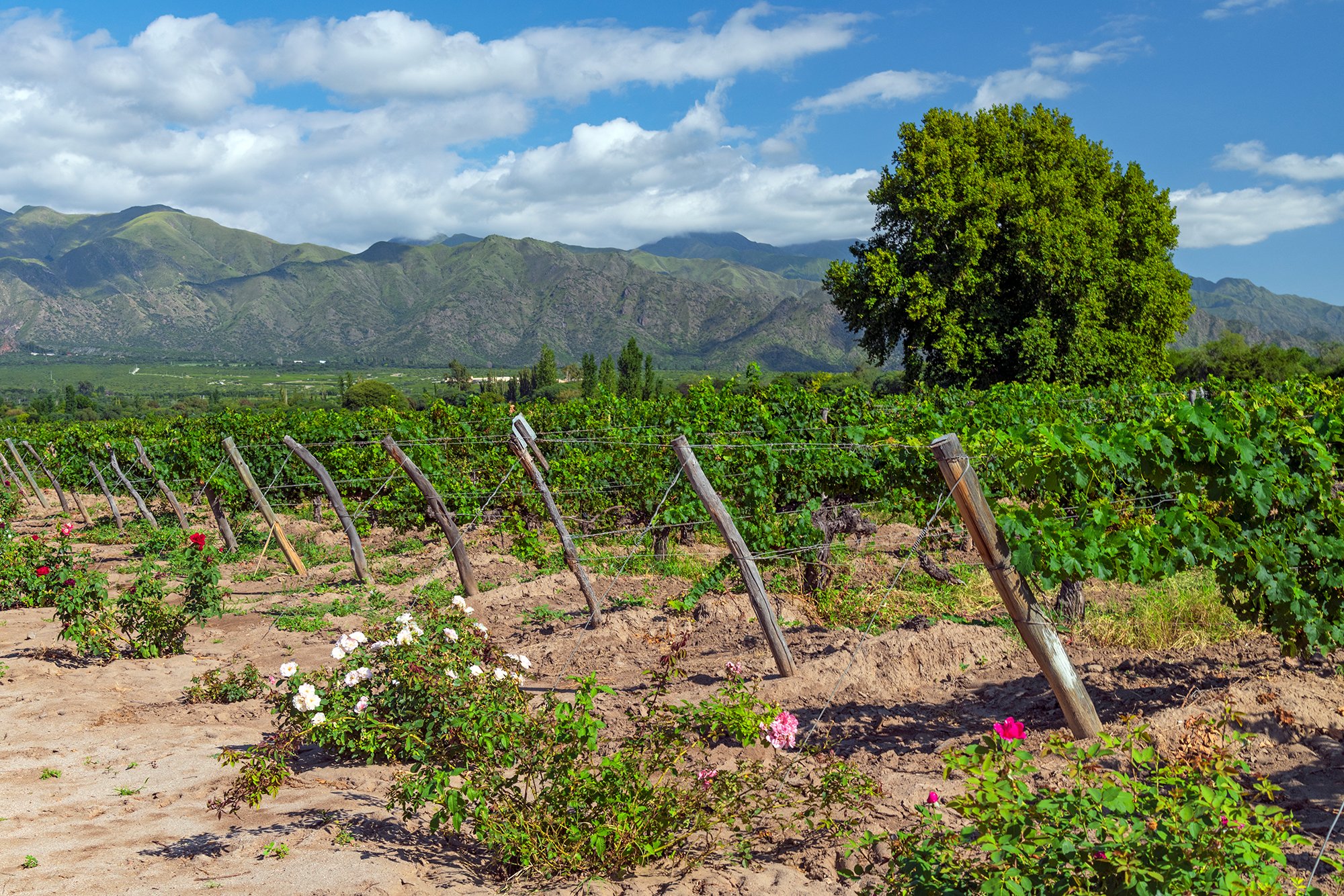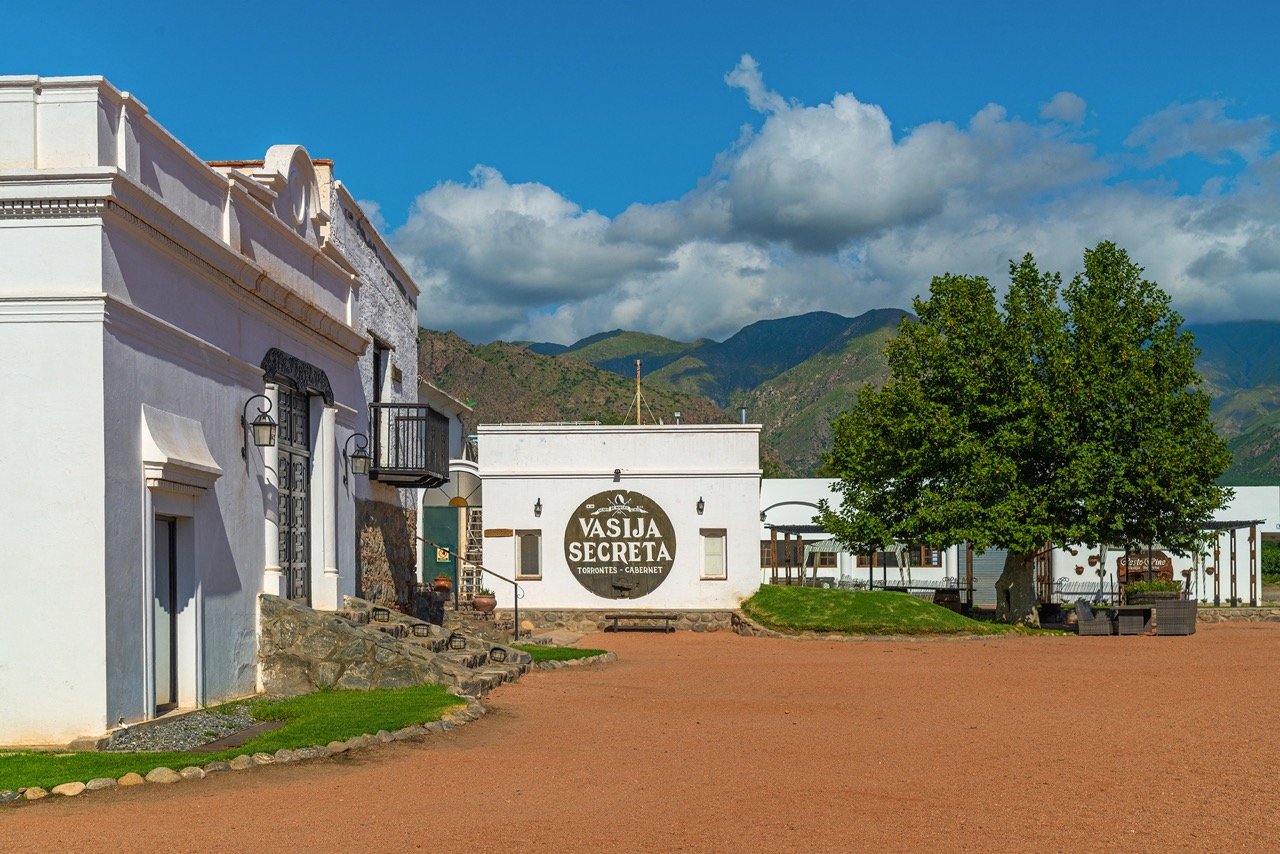The Best Things To Do in Salta Province, Argentina: Cafayate, Cachi, and Nature Galore
When Bri and I were travelling in Argentina, we turned to two people for advice, our dear friends (and esteemed writers and photographers) Robin and Arlene Karpan. They’re here today to continue offering that precious advice, this time to our readers, as they go in-depth on the Salta Provinces’ striking natural sites, local cuisine and wine, photogenic colonial towns and so much more. It’s an actionable itinerary to help you make the most of your time in Argentina’s Salta Province.
Quebrada de las Conchas (Shells’ Ravine) in Salta Province, Argentina. Photo Credit: Robin & Arlene Karpan
Salta is both the name of the province in northwest Argentina and the name of its capital city. Located near the eastern slopes of the Andes, it’s a land of lush green valleys contrasting with semi-desert dotted with gigantic cacti, where we find the world’s highest altitude wine region, delightful colonial towns that invite us to linger, and astonishing landscapes that seem from another planet.
The province has a broad U-shape, bordered by Bolivia to the north, Chile to the west, and the Argentine Province of Jujuy in the middle of the “U”.
What Should Be on Your Salta Province Itinerary?
San Francisco Church in Salta City. Photo Credit: Robin and Arlene Karpan
Explore Salta City, The Capital
The city’s nickname is Salta La Linda (Salta the Beautiful). The central Plaza 9 de Julio is named for the date when Argentina’s independence from Spain was declared on July 9, 1816. Colonnaded colonial buildings surround the huge square, dominated by the Salta Cathedral with its unusual light pink exterior.
As impressive as the cathedral is, an even more ornate church stands just a block away. Construction on the San Francisco Church began in the mid-1700s and has a highly ornate façade and striking magenta colour. The 54-metre-high bell tower is the highest in South America.
Salta abounds with other historic sites and museums on everything from archaeology to the War of Independence, and ethnic and religious art, to name only a few. The best way to experience the city is on foot since most points of interest are near the centre. A nice touch is the many pedestrian-only streets and plenty of parks, making this a very walkable city.
For an overview, be sure to take the San Bernardo Teleferico to the top of San Bernardo Hill with sweeping views over the city and beyond. Here we get a sense of Salta’s location in a broad valley backed by mountains. Short walks as well as restaurants and coffee shops at the top make this a pleasant outing.
Getting to Salta and getting around
The most convenient way to get to Salta is to fly. It’s about two hours from Buenos Aires with several flights per day. While Argentina has a couple of no-frills airlines that fly the route, we opted for Aerolineas Argentinas, the country’s main airline. The fares were only marginally more, they have a better baggage allowance, and the low-cost carriers tend to get a lot more bad reviews. Long-distance overnight buses are another option. Some of the better bus companies have spacious seats that fold into a lie-flat bed, similar to that of business class on some airlines.
Salta’s Martín Miguel de Güemes Airport is only about 7 kilometres from the city centre. Taxis were the only transport option during our recent trip, but fares were inexpensive. In fact, taxi fares were so cheap that we didn’t bother with public transport around the city. The few times that it was too far to walk, such as between our accommodation and the bus station, a taxi cost little more than a couple of dollars.
To travel farther afield from Salta, the options are to rent a car or to rely on buses and guided excursions. We chose the latter because the bus service is excellent for the most part and remarkably inexpensive. We took some guided excursions where the cost for both of us was less than that of a rental car. While so many things in Argentina provide good value for money, rental cars tend to be pricey. However, there is no doubt that having a car provides the maximum amount of freedom and flexibility.
Take a Day Trip to Cachi
Cachi, Argentina. Photo Credit: Robin & Arlene Karpan
One of the best guided day excursions from Salta goes to the tiny colonial town of Cachi, high in the mountains to the west. The trip we took lasted over 10 hours. Here’s a similar trip with a duration of 12 hours for those interested.
The mountain pass we cross is over 2,100 metres higher than Salta, with a lot of that gain coming at once. The most dramatic stretch is the La Cuesta del Obispo, or Bishop’s Slope, a winding road with 225 curves over a 25-kilometre stretch.
Bishop’s Slope (Cuesta del Obispo). Photo Credit: Robin & Arlene Karpan
When we arrived at the summit at 3,348 metres, thick clouds obscured our view, then the clouds dissipated just enough for us to peer down at the crazy twisted road we had come up. A small chapel stands on the summit, looking rather forlorn shrouded in fog.
The route also passes through Los Cardones National Park, named for the cardon – the world’s largest cactus. We stopped in a few places for a close-up view of these monsters as well as to gaze over the wild, desert-like terrain backed by mountains with a reddish tinge.
Los Cardones National Park. Photo Credit: Robin & Arlene Karpan
Cachi is a quaint, cobblestoned colonial town – the kind of place where the overused cliché of “charming” actually fits. Almost all buildings are gleaming white. The large shady centre square is dominated by 18th-century church with three bells, considered one of the finest examples of colonial architecture in the region. We arrived at lunchtime and dined on a surprisingly good llama stew, a specialty of northwest Argentina.
Visiting Cafayate, the Quebrada de los Conchas, & Quedraba de Las Flechas
The medium-sized town of Cafayate lies about four hours south of Salta. Along the way, we pass through the wildly colourful Quebrada de las Conchas, or Gorge of Shells. It’s possible to take a day excursion here from Salta but we wouldn’t recommend doing this unless your time is extremely limited.
Cafayate deserves at least a few days on its own.
If we had to pick our favourite town in Argentina, it would be Cafayate - small enough to be relaxed and easygoing but large enough to have everything we could want. It sits in the midst of a major wine-growing region that is second only to Mendoza in size and importance. We can sip those wines accompanied by Argentina’s famous barbecued steaks at bargain prices.
Nearby some of the most stunning and unusual landscapes wait to be explored. Throw in the local homemade ice cream and for us, this ticks all the boxes for the ideal destination.
Cafayate at night. Photo Credit: Robin & Arlene Karpan
Getting to Cafayate
A few buses per day run from Salta to Cafayate. Some are double-deckers, so try to snag a front seat on the top deck. This route, especially as we get closer to Cafayate, ranks among the top scenic drives in Argentina so the view out the front window is like watching a nature documentary on a massive TV screen.
This area was once on the ocean floor (hence the shells) but geologic changes over millennia have transformed it into a semi-desert with bizarre rock formations, mountain slopes with deep ravines, and above all, colours so intense as to look unreal.
Passing through the Quebrada de las Conchas on the bus is just a teaser. We later took a day excursion run by a local tour company for a closer look. There are two tour companies in town that sometimes work together, so it probably doesn’t make much difference which you choose.
Touring the Quebrada de los Conchas
The tour hit all the main sights with intriguing names such as Los Castillos, looking like castle ramparts where red cliffs rise straight from the banks of the Las Conchas River. The Amphitheatre has a narrow entrance that expands into a steep-walled cave-like formation carved by an ancient waterfall that has since dried up. Someone was playing a flute inside when we arrived.
The acoustics are so perfect that it was like being in a concert hall. This was accompanied by the chipping of parrots that nest in notches high on the stone walls.
The Garganta del Diablo (Devil’s Throat) is an even more impressive formation that was also once an ancient waterfall. With a lot of scrambling over rocks, we can go deep into the formation and gaze up at the smooth rock face where water gushed centuries ago.
Argentinians seem quite fond of naming things Garganta del Diablo. There’s another one at Iguazu Falls, and yet another in a canyon near Tilcara in Jujuy.
Robin appreciating the unique and striking landscape at Quebrada de las Conchas. Photo Credit: Robin & Arlene Karpan
The best part of the trip was that our driver/guide not only took us to the obvious sights but also to hidden gems and spectacular viewpoints that we would never have found on our own. One was a large window formation carved into a reddish-orange rock wall. Along the Los Estratos Trail, we hiked to multi-coloured stratified cliffs formed from different minerals such as iron, zinc, and copper in the rock. They looked like rainbow pancakes.
The Canyon of Arrows (Quebrada de las Flechas)
The Quebrada de las Flechas (Canyon of Arrows) is a day trip out of Cafayate that is more off-the-beaten-path, following Ruta 40 along the Calchaqui River Valley. Our driver Gustavo had to dodge several washouts along the rough and rocky road. We did the trip with two other people in Gustavo’s four-wheel-drive pickup truck. One of the nice things about taking organized excursions in northwest Argentina is that it’s often not busloads of people. If only three or four people sign up for a trip, it often goes ahead with a regular vehicle.
Quebrada de las Flechas, Salta Province, Argentina. Photo Credit: Robin and Arlene Karpan
The terrain changes dramatically in a short distance. We start in the green Calchaqui Valley near Cafayate, home to many of the region’s top vineyards and wineries. Then we enter a peculiar landscape of eroded sedimentary rocks jutting upwards at steep angles, like a bunch of gigantic arrows.
The Quebrada de las Flechas is a testament to nature's incredible sculpting power over millions of years.
The Wines of Cafayate
Cafayate’s other big draw is wine. Mendoza may be Argentina’s largest and most famous wine region, but Cafayate boasts a disproportionate number of wine awards. You’ll find many of the same varietals here as in other parts of the country, but the top specialty is Torrontes, the aromatic white wine that was developed in Argentina and that thrives in this semi-desert.
For an introduction, visit the town’s excellent Wine Museum where a self-guided tour (with explanations in Spanish and English) takes you through everything you could ever want to know about wine. This is considered the highest altitude major wine-growing region in the world.
If you’re based in Salta City and explore the wineries around here, you might be interested in this Full-Day Tour to Cafayate with Wine Tasting.
Many wineries offer tours and have tasting rooms, plus a few have restaurants. While some are farther into the valley, requiring a car to reach, there are enough in and around town to keep you busy if you don’t have transport.
The region’s oldest winery, Bodega Vasija Secreta, is on the edge of town, beautifully situated among vineyards with a mountain backdrop. A few wineries that are farther away have tasting rooms in town. You can’t walk more than a few metres around Cafayate’s main square without coming across another wine shop, many offering good deals or perhaps an introductory taste.
Exploring Cafayate
We found Cafayate the perfect spot to linger for a few days.
It has a surprising range of accommodation to choose from for the size of the town, from simple hostels to fancier digs with prices to match. We stayed at the Hosteria El Zaguan, a half block from the main square, which we chose because it provided great value and had excellent reviews. Run by a friendly couple, Laura and Ivan, it is set in an old colonial house, with a spacious inner courtyard where you relax in the shade of grape vines growing on high trellises.
We enjoyed it here so much that we extended our stay by a few days, and you can look at availability for your stay here, if you’d like.
The Cathedral of Nuestra Senora del Rosario looms over the colonial-style centre square with sidewalk restaurants lining the facing streets. You can’t go wrong with beef, and especially barbecued steak, anywhere in the country. But be sure to try some of the northern Argentina specialties such as locro, a thick stew with origins pre-dating the Spanish conquest. Empanadas are ubiquitous throughout the country, but folks in the north claim that they originated here and that they still make the best ones. You be the judge.
Enjoying some ice cream on a hot day in Cafayate! Photo Credit: Robin & Arlene Karpan
If you’re sitting in the square on a warm summer day and can’t decide whether to have a glass of wine or an ice cream, you can easily solve the dilemma by doing both at once. A Cafayate specialty is local ice cream made from Torrontes or Malbec wine. Better yet, get a double cone with a scoop of each.
Venturing Farther Afield in Salta
Two other must-see places in Salta Province include the expansive salt lake at Salinas Grandes and the kaleidoscopic mountain slopes of the Serrania de Hornocal. However, these are both quite far north and are more convenient to reach when visiting Jujuy Province, which we’ll be covering in the coming days.
We hope this article lended itself well to exploring Salta Province, perhaps a lesser known but of the country, but one which is most certainly worth taking the time to explore.



